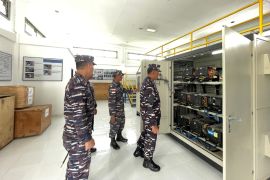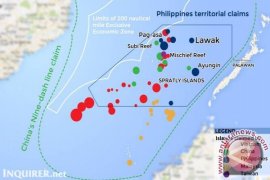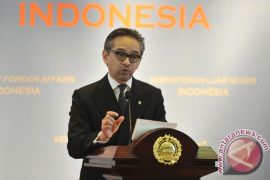Looking back two decades ago, the balance of power in Pacific navies especially in the field of aircraft carrier is very different from today. Aside from the US and Thailand, no other regional navies operated any aircraft carrier or large flat deck amphibious vessels. Fast forward two decades later, the Pacific is teeming with aircraft carriers. Currently, there are 12 flattops operating or under construction by five regional navies in the Pacific, not counting those operated by the United States Pacific Fleet. Those numbers consist of three owned by China (1 operational + 2 under construction), two by Australia, two by South Korea (1 operational + 1 under construction), four by Japan and one by Thailand. Even the neighboring Indian Ocean power, India, has one carrier operational and one under construction. So, this raises the question as to why regional navies in the Asia-Pacific region are pursuing or upgrading their carrier capabilities?
The rising regional tensions brought by multiple territorial disputes and also an increasingly assertive China can be seen as one of the reasons of the growth of aircraft carrier "population" in the Asia-Pacific region. The presence of territorial disputes like in the South China Sea and the East China Sea has driven regional military powers to upgrade their capabilities in order to secure their respective claims in the disputed region. The geographical nature of the Pacific, a region separated by vast amount of water puts an emphasis on the importance of navies in any conflict. And with disputes situated in far flung island chains, navies will need a robust power projection capability in order to secure such territories. And, talking about power projection capabilities, aircraft carriers have always been the premier tool of power projection in the realm of naval combat.
Their ability to strike deep into an adversary’s territory via the use of fighter jets and helicopters has always been the main power of aircraft carriers. Strikes made by US navy carrier borne fighters in Vietnam and Iraq are just some of the many examples of such practice. Furthermore, their ability to provide air cover for fleets operating with them has enabled navies to conduct distant blue water operations, independent from the reliance of ground based fighter jets for protection. With these benefits, it is clear that an aircraft carrier is a very powerful tool of power projection.
Looking into the context of Asia Pacific, it is clear that regional navies had those in mind when pursuing their carrier capabilities. Looking at China for example, its ambition to become the primary naval force in the Pacific puts it head to head with the US Pacific Fleet. Without carrier support, the People's Liberation Army Navy (PLAN) ships operating in blue water regions face a great disadvantage against the US Navy, with the 7th fleet alone having three aircraft carriers (Navy Times, 2017). Furthermore Chinese territorial claims in the South China Sea and East China Sea require its navy to be able to project power into these regions. In the case of the South China Sea, the distant range of it from mainland China would put a great strain on China’s capability on providing effective air cover over the territory in the event of armed conflict.
The construction of artificial islands in the South China Sea is a logical answer to that problem. But even then, China's power projection capability in the South China Sea can be disrupted, since island bases while unsinkable can be blockaded and isolated. So, the solution is, of course, having those bases working in conjunction with aircraft carriers. Having aircraft carriers operating in the South China Sea supported by aircraft from artificial island bases will almost certainly secure China's control over the South China Sea.
In the case of Japan, the need to counter an increasingly powerful and assertive China has been one of the main motivations of it to build its carrier capability. The planned conversion of the Izumo-class in order to operate F-35B stealth fighters will provide Japan with a powerful tool to contest China in territorial disputes in the East China Sea. Furthermore, having aircraft carriers armed with stealth jets will also serve as insurance for Japan against the crippling of its airforce in the event of armed conflict with China. China's vast arsenal of cruise and ballistic missiles put many of Japan's airbases at risk. Having aircraft carriers will mitigate those risks, since attacking highly mobile platform will be far more difficult than striking stationary targets like airbases.
And likewise, South Korea's effort to build its carrier capabilities has also been influenced by the rapid naval buildup of its neighbor, and the presence of territorial dispute with Japan. The construction of its two Dokdo-class helicopter carriers is part of the nation's plan to expand its blue water capabilities in order to counter both China and Japan, and also address the traditional threat from North Korea.
Meanwhile, in the case of Australia, the shortcomings in its power projection capability during the 1999 military operation in East Timor have been the driving force of it for acquiring the Canberra-class amphibious assault ships. These ships, which are capable of landing thousands of marines ashore and backed up by dozens of helicopters, will also enable Australia to project power into distant regions in the Pacific.
With the Pacific becoming more crowded with aircraft carriers and increased power projection capabilities, how should small to medium sized navies like Indonesia respond? As of right now, taking part in the "carrier race" is clearly not an option for Indonesia. But, the fact that the increased power projection capabilities provided by these aircraft carriers serve as a potential threat for Indonesia cannot also be ignored.
While Indonesia is not a claimant state in the South China Sea dispute, China's inclusion of part of Indonesia's exclusive economic zone (EEZ) in the Natuna Sea into the 9 dashed line is a cause for concern. China's reluctance of confirming its stance towards the issue further aggravates the ambiguity of China's intention towards Indonesia's EEZ. What is clear is, China has a growing military capability in the South China Sea, and has the intention to control the region.
As stated before, the presence of PLAN aircraft carriers, supported by island bases in the South China Sea, represents a significant power projection capability in the region. Indonesia, as one of the countries in the region that has the potential of being faced with such power projection capability, must remain vigilant. Asymmetric means for countering China's power projection capability such as through the development of Anti-Access/Area Denial (A2/AD) capabilities in the Natuna can be a possible option for Indonesia's military development in the future.
But, for the meantime, Indonesia should keep a watchful eye towards the growth of aircraft carriers and power projection capabilities in the Asia-pacific region. With increasing competition between regional navies undoubtedly fuelling tensions, it is up to every country in the region, including Indonesia, to actively strive to maintain peace, and keep the tensions from boiling into open conflicts.
*M.Teguh Ariffaiz Nasution is a graduate of the University of Indonesia's international relations department.
*The views and opinions expressed on this page are those of the authors and do not necessarily reflect the official policy or position of ANTARA News Agency
Copyright © ANTARA 2019









